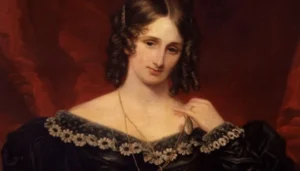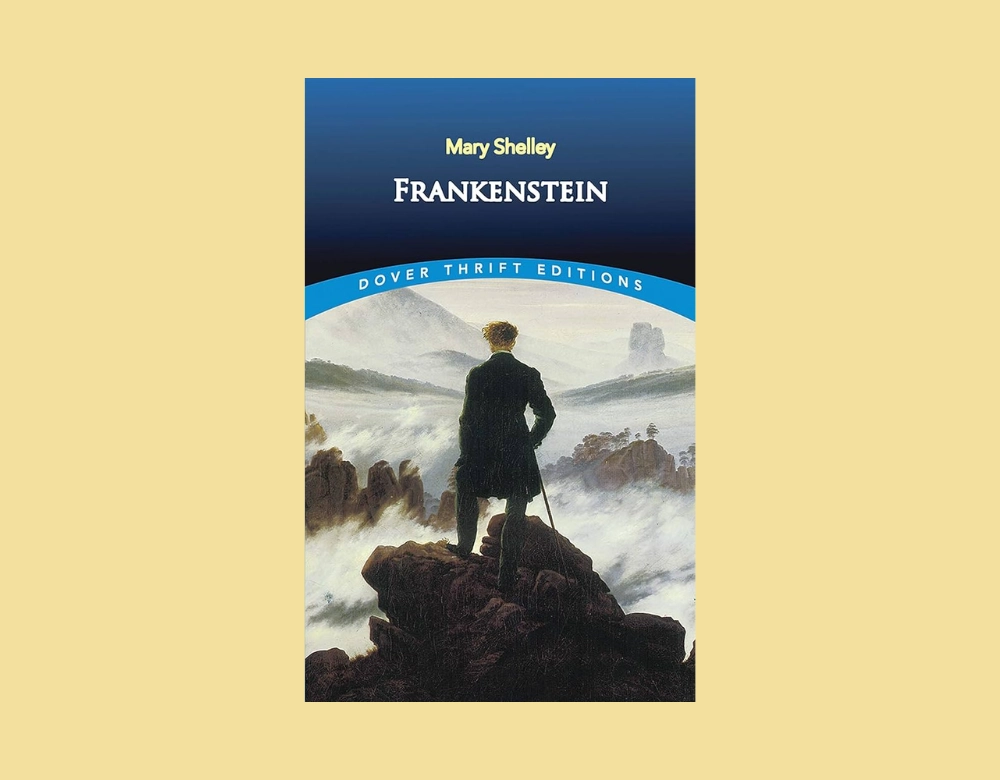Mary Shelley’s Wild Ride: Her Background and Literary Spark
So, Mary Shelley. This woman wasn’t just some quiet Victorian lady (actually, she was pre-Victorian, if we’re being pedantic, but you get the idea); she was the child of two total radicals: the feminist philosopher Mary Wollstonecraft and the anarchist William Godwin. Born in 1797, her life was basically a gothic novel itself. Seriously. She lost her mother just days after birth, ran off with the already-married (and super-famous) poet Percy Bysshe Shelley when she was 16, and endured multiple miscarriages and the loss of several children. All that trauma? It absolutely poured into Frankenstein.
- The “Ghost Story Contest”: The whole book actually started as a challenge. In the summer of 1816 (the “Year Without a Summer,” thanks to a volcanic eruption), Mary, Percy, Lord Byron, and others were stuck inside due to awful weather near Lake Geneva. Byron suggested they each write a ghost story. Mary, like, totally won.
- Literary Lineage: Her parents’ intellectualism, particularly her mother’s proto-feminist ideas, seeped into her work. Shelley herself was a product of the Enlightenment’s radical thought, but she saw its dark side.
Shelley’s Philosophical Deep Dive: What Was She Really Thinking?
Shelley’s core philosophy, especially in Frankenstein, is basically a huge, terrifying warning about unbridled ambition and the irresponsibility of creation. She wasn’t against science itself (not entirely, anyway), but she was totally against science that ignores its ethical consequences.
| Core Philosophical Theme | What it Means (The Big Idea) |
| The Dangers of Hubris | Victor Frankenstein plays God, creating life from dead parts, but then he immediately rejects his creation. It’s the ultimate warning against ambition without accountability. Don’t mess with nature if you can’t handle the consequences, man. |
| Abandonment and Nurture vs. Nature | The Creature isn’t born evil; he becomes monstrous because he’s rejected by everyone, especially his creator. Shelley argues that isolation and lack of love corrupt a soul, not its intrinsic make-up. |
| The Price of Progress | The Enlightenment championed reason and scientific advancement, right? Shelley asks, “But at what cost?” She explores the dark underbelly of unchecked scientific inquiry and technological advancement. |
| What Makes a Monster? | Is the Creature the monster, or is Victor, who abandons his “son” to a life of misery and revenge, the real monster? The book forces you to confront your own prejudices. |
Required Reading: Why Frankenstein Still Haunts Our Classrooms

The Enduring Importance of This Text for Today’s Students
If you’re studying anything from bioethics to literary theory, Mary Shelley’s Frankenstein is not just some old spooky story; it’s an absolutely foundational text. Seriously. It’s often called the first science fiction novel, and it raises questions about artificial intelligence, genetic engineering, and human responsibility that are still totally relevant today.
It is absolutely crucial for students because:
- Ethical Framework: It provides a timeless framework for discussing the ethics of scientific innovation. When shouldn’t we do something, just because we can? This is, like, a core question for STEM students.
- Narrative Structure: It uses a super complex frame narrative (story within a story within a story, told by letters). Analyzing this helps students understand how literary structure affects meaning and suspense. It’s tricky.
- Humanity’s Definition: It forces you to consider what truly defines “humanity” is it appearance, intellect, emotion, or social connection? The Creature’s journey is a profound exploration of this.
What to Read Next: Deeper Dives into Scientific Ethics and Horror
Once you’ve wrestled with Victor and his Creature, you’ll probably want to explore other works that delve into similar themes of scientific hubris, the nature of humanity, and gothic dread.
| Recommended Reading | The Direct Connection to Frankenstein’s Themes |
| The Strange Case of Dr. Jekyll and Mr. Hyde (Robert Louis Stevenson) | Another classic exploration of the “monster within” and the dangers of unchecked scientific experimentation, focusing on the duality of human nature. It’s pure Victorian Gothic psychological horror. |
| The Island of Doctor Moreau (H.G. Wells) | A chilling early science fiction novel about a scientist who performs vivisection to turn animals into humans. It directly tackles the ethics of playing God and the question of what constitutes humanity. |
| Paradise Lost (John Milton) | Shelley explicitly references this epic poem in Frankenstein. The Creature reads it and identifies with both Adam and Satan. Understanding Milton helps you understand the Creature’s internal struggle and his rage. |
From Page to Pop Culture: Frankenstein’s Stage and Screen Life
The Cinematic and Theatrical Power of Shelley’s Vision
Look, Frankenstein has been totally adapted so many times it’s almost impossible to count, and for good reason! The story is just inherently dramatic: a man plays God, a monster is born, and then there’s this whole chase-and-revenge saga. The visual elements the creation scene, the monster’s imposing figure are pure cinematic gold.
It established the visual language for the “mad scientist” and the “man-made monster,” shaping horror and science fiction for centuries. Seriously, every monster movie owes something to this book.
- On Direction: It popularized the iconic look of the stitched-together creature (though Shelley’s book isn’t specific, early films made it stick) and the spooky laboratory with lightning and bubbling beakers. That’s, like, a cultural archetype now.
- Performance: The Creature’s role demands a performance that conveys both terrifying power and heartbreaking vulnerability. It’s a hugely challenging and rewarding role for an actor.
Key Adaptations: Frankenstein in Film, Stage, and Beyond
The story is just so powerful it keeps finding new life. And sometimes, the adaptions totally miss the point (making the Creature dumb, for instance), but others really capture the essence.
| Adaptation Type | Key Example/Details | Why It’s Famous/Infamous |
| The 1931 Film (Universal) | Directed by James Whale, starring Boris Karloff as the Creature. This one is iconic, defining the Monster’s look. | Made Karloff a legend. It simplified the story but created the enduring image of the green-skinned, neck-bolted monster we all know. |
| Young Frankenstein (1974) | Directed by Mel Brooks, starring Gene Wilder. A brilliant horror-comedy parody. | Proves the story’s cultural saturation; you can make fun of it because everyone knows the original so well. Also, it’s hilarious. |
| Stage Plays (e.g., Danny Boyle’s 2011) | Often focuses on the Creature’s eloquence and suffering, sometimes rotating actors for Victor and the Creature. | Allows for deeper exploration of the Creature’s internal monologue and philosophical arguments, which films often cut. |
| Literary Spinoffs | Countless novels, comics, and even a stage play by Nick Dear (used for Boyle’s production) that focus on the Creature’s perspective. | Shows the lasting fascination with the other side of the story the abandoned creation. |
Conclusion: The Never-Ending Resonance of Mary Shelley’s Frankenstein
So, here we are at the end, still grappling with Mary Shelley’s horrifyingly brilliant Frankenstein. Why does this story, written by a teenager over two centuries ago, still resonate so profoundly? Because its central questions about creation, responsibility, and what it truly means to be human are, like, eternally relevant. We keep asking them.
- Every new advance in AI, genetic engineering, or cloning technology immediately makes us think of Victor Frankenstein’s hubris. We always wonder if we’re creating our own monster.
- The book permanently ingrained the idea that the true horror often isn’t the physical monster, but the moral abandonment and prejudice of humanity itself.
Shelley gave us a timeless warning: Just because we can create, it doesn’t mean we should, especially if we aren’t prepared to love and nurture what we bring into existence. It’s a huge, crucial lesson for humanity.

